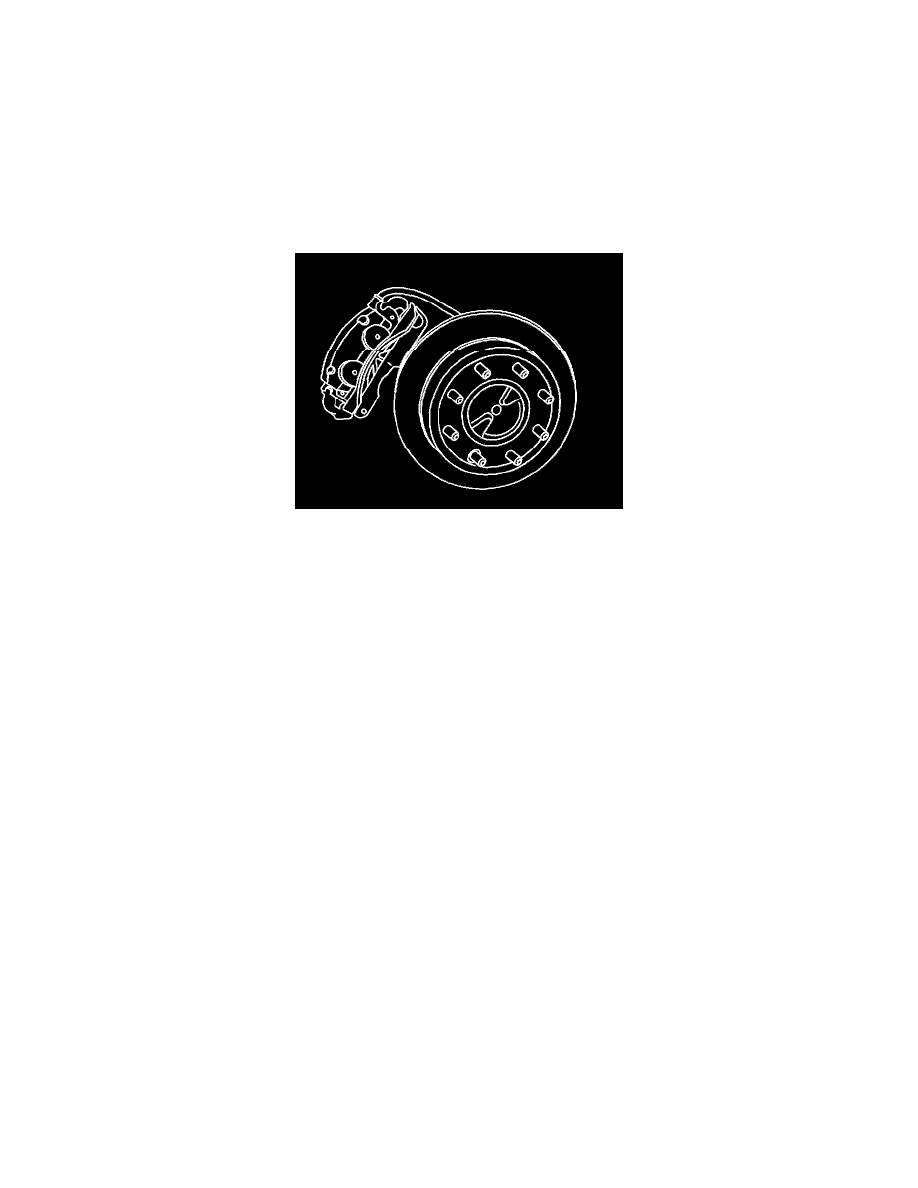Suburban 1/2 Ton 2WD V8-5.3L VIN T (2004)

lead to brake pulsation.
1. Use the J42450-A to clean all rust and contaminants from the mating surface of the hub flange.
2. Use the J41013 to clean all rust and contaminants from the inside diameter of the hat section of the brake rotor to prevent any foreign material
from getting between the brake rotor and the hub flange.
3. Inspect the mating surfaces of the hub/axle flange and the rotor to ensure that there are no foreign particles or debris remaining.
4. Align the rotor to its original position on the hub, if applicable, and install the rotor by slowly turning the rotor while pushing the rotor towards the
axle.
5. If the brake rotor was removed and installed as part of a brake system repair, measure the assembled Lateral Runout (LRO) of the brake rotor to
ensure optimum performance of the disc brakes. Refer to Brake Rotor Assembled Lateral Runout (LRO) Measurement.
6. If the brake rotor assembled LRO measurement exceeds the specification, bring the LRO to within specifications. Refer to Brake Rotor Assembled
Lateral Runout (LRO) Correction.
7. Install the caliper and the bracket as an assembly to the vehicle.
8. Perform the following procedure before installing the caliper bracket mounting bolts.
^
Remove all traces of the original adhesive patch.
^
Clean the threads of the bolt with brake parts cleaner or the equivalent and allow to dry.
^
Apply Threadlocker GM P/N 12345493 (Canadian P/N 10953488) to the threads of the bolt.
Notice: Refer to Fastener Notice in Service Precautions.
9. Install the caliper bracket mounting bolts.
^
Tighten the brake caliper bracket mounting bolts to 175 Nm (129 ft. lbs.) (15 Series).
^
Tighten the brake caliper bracket mounting bolts to 300 Nm (221 ft. lbs.) (25 Series).
10. Install the tire and wheel assembly. Refer to Tire and Wheel Removal and Installation in Tires and Wheels.
11. Lower the vehicle.
12. With the engine OFF, gradually apply the brake pedal to approximately 2/3 of its travel distance.
13. Slowly release the brake pedal.
14. Wait 15 seconds, then repeat steps 12-13 until a firm pedal is obtained. This will properly seat the brake caliper pistons and brake pads.
15. Fill the master cylinder reservoir to the proper level with clean brake fluid. Refer to Master Cylinder Reservoir Filling in Hydraulic Brakes.
Burnishing Pads and Rotors
Burnishing Pads and Rotors
Caution: Road test a vehicle under safe conditions and while obeying all traffic laws. Do not attempt any maneuvers that could jeopardize
vehicle control. Failure to adhere to these precautions could lead to serious personal injury and vehicle damage.
Caution: Refer to Brake Dust in Service Precautions. Burnishing the brake pads and brake rotors is necessary in order to ensure that the
braking surfaces are properly prepared after service has been performed on the disc brake system. This procedure should be performed
whenever the disc brake rotors have been refinished or replaced, and/or whenever the disc brake pads have been replaced.
1. Select a smooth road with little or no traffic.
2. Accelerate the vehicle to 48 km/h (30 mph).
Important: Use care to avoid overheating the brakes while performing this step.
3. Using moderate to firm pressure, apply the brakes to bring the vehicle to a stop. Do not allow the brakes to lock.
4. Repeat steps 2 and 3 until approximately 20 stops have been completed. Allow sufficient cooling periods between stops in order to properly
burnish the brake pads and rotors.
